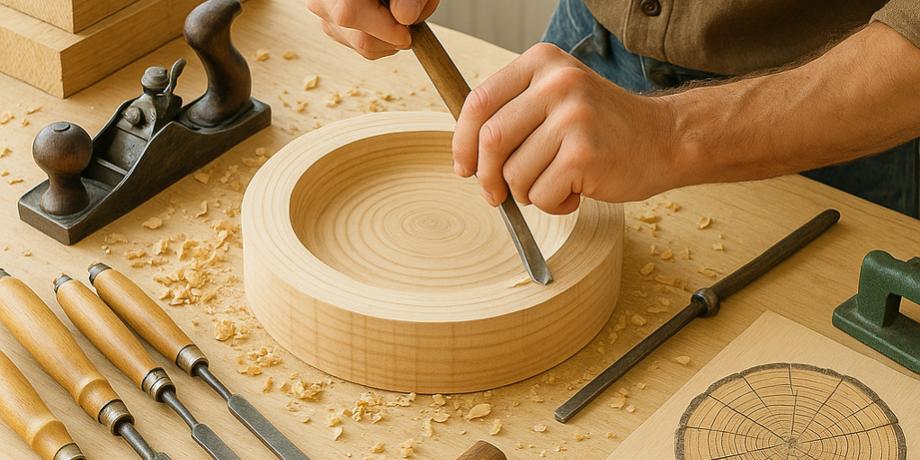The Art and Techniques of Wood Processing
At Creatimber Global Sdn Bhd, we understand that wood is not just a material; it’s a versatile, sustainable resource that plays a critical role in everyday life. Whether for construction, furniture, or fine craftsmanship, the process of working with wood requires both skill and creativity. As a leading Malaysian wood supplier, we take pride in utilizing a wide array of techniques to transform raw wood into beautifully crafted products. Let’s explore the various methods of wood processing that showcase the craftsmanship behind each piece.
- Sawing: Shaping Wood for Every Purpose
Sawing is one of the most fundamental steps in wood processing. The goal is to divide a large piece of wood, such as a log or a board, into smaller, manageable sizes for further processing or assembly. In modern woodworking, electric saws or band saws are used for precision cutting, ensuring accurate measurements and shapes.
For intricate designs, manual sawing is still essential, allowing craftsmen to create custom shapes and patterns. This technique not only requires skill but also enables the creation of unique effects, particularly when delicate carvings or custom cuts are needed.
- Planing: Smoothing the Surface for Perfection
Planing is an essential process used to smooth and level the surface of wood. This step removes imperfections, rough patches, or uneven areas, creating a flawless surface that serves as the foundation for further treatment or assembly. Whether using a planer machine or manual tools, the planing process ensures the wood is refined and prepared for the next stage.
In high-end woodworking, manual planing can create a distinct gloss on the wood’s surface, enhancing its natural beauty and uniqueness—something mechanical processes often cannot achieve.
- Sanding: Refining the Texture and Quality
Sanding is the final step in smoothing the surface of wood. Using sandpaper or a sanding machine, this process eliminates rough spots, scratches from sawing, and planing marks, making the wood surface smoother and more refined.
Sanding brings out the elegance of wood, enhancing its texture and providing a soft, silky feel. This is particularly important when creating fine furniture or artistic pieces, where attention to detail is crucial.
- Carving: Bringing Creativity to Life
Carving is where wood becomes a true work of art. Skilled artisans use specialized tools to carve intricate patterns, shapes, or images into the wood’s surface. From geometric designs to detailed depictions of nature, carving allows the artist to breathe life into the material.
This technique demands both expertise and creativity, as different types of wood offer various textures and hardness levels. Many artists carefully select their wood based on the grain and characteristics, using them to enhance the aesthetic qualities of their work.
- Bending: Shaping Wood into Curves
Bending wood is a popular technique, especially in furniture design. Traditionally, this process involved heating the wood to soften it, allowing it to be bent into the desired shape. However, this requires great skill, as excessive heat or improper handling can cause the wood to crack.
With modern machinery, wood can now be bent more precisely without damaging the material, allowing for smoother, more consistent curves in products like chairs, tables, and artistic sculptures.
- Joining: Combining Pieces for Strength and Beauty
Joining involves combining multiple pieces of wood to create larger surfaces, such as tabletops, flooring, or large furniture items. The process requires carefully aligning the edges and securing them with glue, nails, or specialized joints like dovetails or mortise-and-tenon.
Not only does this technique enhance the efficiency of wood use, but it also creates beautiful, cohesive patterns in the wood grain. It’s often employed in high-quality furniture and decorative woodwork to showcase craftsmanship and design integrity.
- Finishing and Protection: Enhancing Durability and Aesthetic Appeal
Once the basic processing is complete, wood undergoes finishing treatments to protect it from environmental factors and enhance its appearance. Finishing helps preserve wood by shielding it from moisture, dust, and wear, while also enhancing its visual qualities.
The type of finish used depends on the wood’s nature and its intended use. Some finishes highlight the natural grain of the wood, while others add color, shine, or special effects. These treatments not only improve the wood’s durability but also contribute to its overall elegance and appeal.
Conclusion: The Art of Woodworking in Malaysia
At Creatimber Global Sdn Bhd, we believe that wood processing is not just about technical expertise; it’s an art form that combines science, creativity, and craftsmanship. From sawing, planing, and sanding to carving, bending, and joining, each method offers endless possibilities for creating beautiful, functional products. Whether it’s a piece of handcrafted furniture or a bespoke wooden sculpture, our expert craftsmen in Malaysia transform raw wood into works of art, ensuring that each item is as durable as it is beautiful.
As a trusted wood supplier in Malaysia, we are committed to delivering the highest quality wood products, showcasing the skill, dedication, and artistry that goes into every piece we create. Visit our website at www.creatimber.com.my to learn more about our offerings and how we can bring your wooden projects to life.






